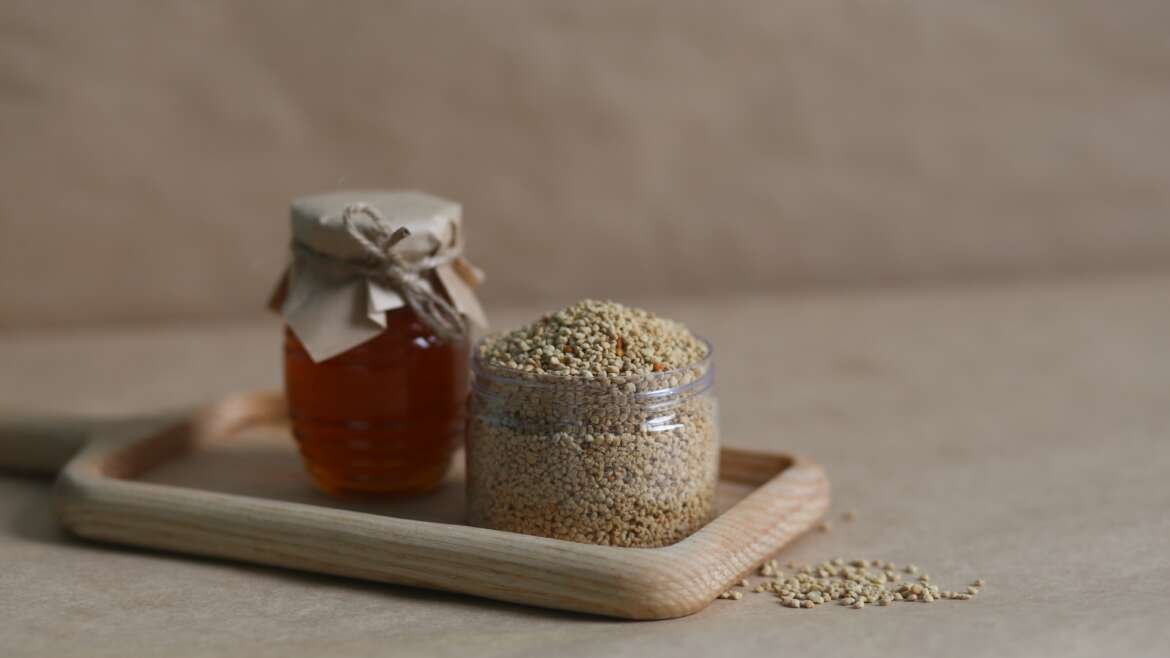Quinoa is a whole grain that is becoming very popular because of how healthy it is. Even though quinoa seeds can be cooked and eaten like most grains, the quinoa plant itself is more like beets and spinach. People can eat both the seeds and the leaves of this plant, which makes it very useful and healthy. Benefits Here are some of the ways that eating quinoa regularly is good for your health.


A source of protein from plants
Quinoa is a good way for people who eat only plants to get protein. One cup, or 185 grammes, of cooked quinoa gives you protein. There are many different amino acids in the proteins in quinoa. Amino acids are needed for many important things, like building muscle and keeping the immune system working. Quinoa is also a great source of the amino acid lysine. This is an amino acid that your body needs. Lysine is a very important part of making proteins. Even though lysine deficiency is rare, it can lead to a number of health problems because it is important for things like growth and development.
High amount of fiber:
In a single 185 g cup, quinoa has more fibre than most other grains. The Academy of Nutrition and Dietetics says that eating enough fibre can help lower the risk of a number of health problems, such as constipation, high cholesterol, high blood pressure, and diverticulosis.
An antioxidant source
When compared to other gluten-free grains, quinoa is a good source of antioxidants. Most foods that don’t have gluten are made with corn, rice, or potato flour. Most of the time, these have less nutrients than things made with quinoa, like quinoa flour.
Quinoa provides vitamin E.
This is an antioxidant compound that may help lower the risk of coronary heart disease, some cancers, and several eye disorders.
Helps meet manganese requirements
This element also helps many enzymes do their jobs in the body by working with them.
Good place to get iron
Iron is important for many things that happen in the body. It is an important part of things like haemoglobin. This chemical carries oxygen through the blood, giving the body’s cells energy and helping them work. Find out more about how iron works in the body. A place to get folate Folate is a B vitamin that is very important because it helps make DNA.
The Office of Dietary Supplements says that it is especially important for pregnant women to get enough folate to lower the risk of neural tube defects in their babies (ODS). Getting enough folate in your diet might also lower your risk of getting a few types of cancer and depression. Folic acid supplements may be the only way for pregnant women to get enough folate. But if you eat more folate, you can lower your risk of being deficient.
Quinoa gives a good amount of the folate a person needs every day. Provides magnesium There are 118 mg of magnesium in one cup of cooked quinoa. Even though the amount you need each day goes up as you get older, quinoa is a good source of the mineral.
Magnesium is in every cell of the body and is needed for more than 300 enzyme reactions to work. The ODS thinks that low magnesium levels might be linked to the following health problems:
• Having high blood pressure
• cardiovascular disease
• type 2 diabetes
• migraine
But more research is needed to prove that magnesium in the diet helps these conditions.
Contains quercetin and kaempferol
The plant chemicals quercetin and kaempferol are found in quinoa. These antioxidants may help prevent a wide range of long-term diseases. For example, some research suggests that kaempferol may help protect against infections, heart disease, diabetes, and several types of cancer, including skin and liver cancers. Quercetin may also help the body fight off infections and reduce inflammation.
Nutrition
Plant experts classify quinoa as a pseudocereal, not a grain. This means that it is a non-grassy plant that can be used to make food in a way that is similar to how cereals and grains are used. It also has the same kinds of nutrients. Quinoa is good for you because it is a whole grain. Whole grains have the whole grain seed and none of its parts have been taken away. Whole grains have important vitamins, minerals, and fibre that might not be there if parts of the grain were taken out.
When cooked, one cup of quinoa gives you:
• 222 calories
• 8.14 grammes of protein
• Fiber: 5.18 g
• 3.55 g of fat, 0.42 g of which is saturated
• 39.4 g of carbohydrate
Quinoa is very healthy and can meet a large portion of a person’s daily needs for a number of important nutrients, including: Nutrient Percentage of daily requirement for adults Magnesium Depending on age and gender, at least 28.10% Manganese in men is 27.43% and in women it is 25.05% Folate 19.43% Phosphorus 40.14% Copper 39.44% Iron is found in 34.5% of men and 15.33% of women. Zinc in men is 18.36% and in women it is 25.25% Potassium 6.77% Vitamin B-1 16.5% 18.55% of men and 10% of women have enough riboflavin. Vitamin B-6, depending on age, about 17.54% There are small amounts of vitamin E, vitamin B-3, and calcium in the same amount of quinoa.
Diet
It is simple to add quinoa to your diet. It can be used in place of rice in any dish. It takes as little as 15 minutes to cook its small grains until they are soft. Quinoa tastes slightly nutty, which makes it a very useful ingredient. It can be used in baking or as a grain for breakfast. Quinoa is also good in cold salads, burgers, and hot side dishes. Quinoa needs to be washed 5 to 6 times to get rid of the bitter taste.


1 Comment
Add Comment